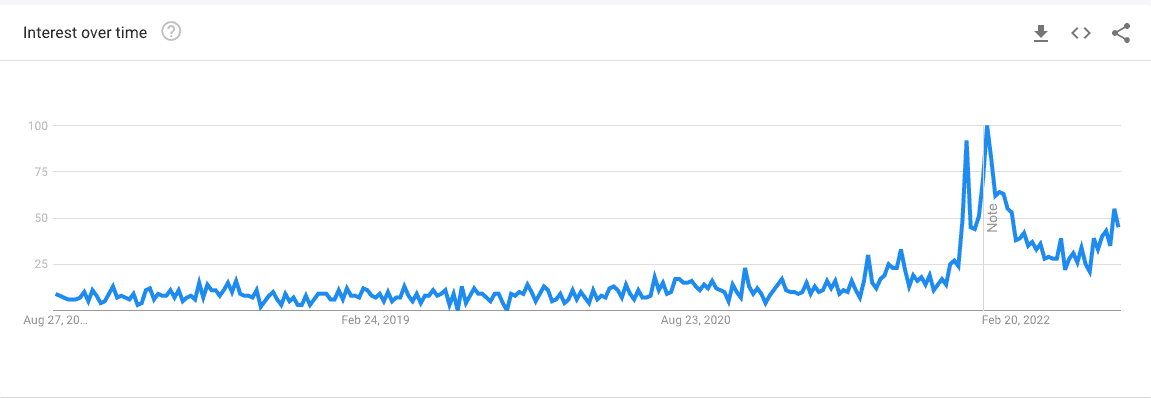Beyond The Metaverse: Why Digital Real Estate Is More Than Virtual Worlds
As interest in digital real estate continues to rise, so to do the misconceptions. Here's everything you need to know about the future of digital real estate and what it means.

Parcl Team
Aug 23, 2022
As digital real estate continues to explode in popularity, more and more investors (new and old) are looking to get involved in one of the the most exciting opportunities of Web3 and crypto.
From virtual reality, to transforming how we interact and communicate on social media, millions of people around the globe are flocking to the next "gold rush."
While the Metaverse and virtual worlds certainly play a massive role in the digital real estate industry, it would be a mistake to forget the other aspects of this growing field.
In this article, you'll learn why the Metaverse is only just a part of digital real estate, and why that distinction is important for continued mainstream adoption of crypto and digital real estate investments.
Why digital real estate is not just the Metaverse

The Metaverse is expected to grow to an $800 billion market by 2024, and the number of operational Metaverse projects and virtual worlds will most likely continue to increase, providing plenty of opportunity for investors looking to add digital real estate to their portfolio. Owning a building or piece of land in popular games such as Second Life or even Minecraft is becoming increasingly common for gamers and technology enthusiasts alike, not to mention other virtual lands in well-known NFT projects as well.
Given the term "digital real estate" it's only natural for one to assume it may refer exclusively to virtual land in virtual worlds. "Digital" often refers to anything living online or as packets of data on a computer.
While there is no doubt value (as decided by the market) of virtual lands in the Metaverse, those assets aren't usually tied to real world real estate pricing–they are frequently two separate concepts.
For example, investing in land in the popular NFT game ecosystem, BYOPills, is different than owning a rental property in real life. Both have benefits and can potentially generate income, but they are two entirely investments. For players of the BYOPills game, owning land can help you generate resources which can then be exchanged for cryptocurrency. Owning a rental home allows you as the owner to collect rent.
But beyond the Metaverse, there is a growing amount of companies aiming to bridge the gap between physical real estate value and and bringing those benefits to the digital the world.
After all, one of the most appealing aspects of real estate in general, is in theory, folks will always need a roof over their home. While owning land in the Metaverse can provide many benefits, they are not yet at the level of benefits and utility physical real estate can provide.
Yet despite the benefits of real estate investing, it remains an incredibly gated asset class. Historically, you need signifiant sums of money to invest in rental properties and ultimately grow your real estate investments.
Not only does traditional real estate require significant amounts of capital to get started, it can be incredibly time consuming as well. From collecting rent, to home repairs, the to-do list is virtually never ending.
But what if there was a way to bring the benefits of physical real estate to the digital world?
Bridging the gap: Physical real estate in a digital world

Investing in digital real estate can mean investing in virtual world land, but it can also mean using something like the Parcl Protocol to invest in real estate assets that are tied to the real world prices of physical real estate.
The Parcl Price Feed mimics the behavior of real-world real estate markets and gives users access to price exposure without the burdens of owning or transacting hard assets.By creating a digital representation of property values from various cities and neighborhoods, Parcl allows you to gain exposure to entire cities like Manhattan or Miami.
No longer do you need tens of thousands of dollars to begin real estate investing. Through the new and exciting world of digital real estate, you can benefit from the value of physical real estate all while continuing to live in a digital first world.
What's not to like about benefiting from both physical real estate and Metaverse land?
Digital Real Estate FAQ
How are the Metaverse and digital real estate different?
Digital real estate has since been expanded upon with the introduction of Web3 PropTech companies and new technology such as NFTs and synthetic assets, not just virtual worlds. A few examples of Web3 companies operating in this space would be Parcl and Propy, serving different areas of the real estate sector.
Are domain names considered digital real estate?
Traditionally, digital real estate includes URLs, social media accounts, websites, and any site that takes up space on the internet. Think of these as Web2 versions of digital real estate.
Is digital real estate tied to the real world?
Digital real estate isn't just buying land in the Metaverse; it's investing with innovative protocols and using the Web3 real estate companies to make real estate investing cheaper, easier and faster.
Shared content and posted charts are intended to be used for informational and educational purposes only. Parcl does not offer, and this information shall not be understood or construed as, financial advice or investment recommendations. The information provided is not a substitute for advice from an investment professional. Parcl does not accept liability for any financial loss or damages. For more information please see the terms of use.

Parcl Team



